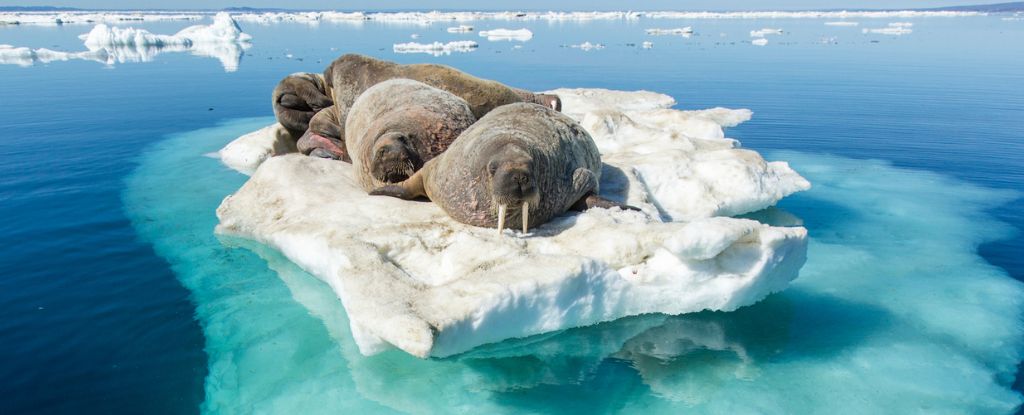Products You May Like
Another year, another climate record broken. In 2022, an international team of scientists measured the hottest global ocean temperatures in human history.
That makes 2022 the seventh year in a row that ocean temperatures have hit new peaks.
The record is based on two international timelines of ocean heat data stretching back to the 1950s: one conducted by government researchers in the United States and the other by government researchers in China.
Both datasets show that ocean waters reaching up to 2,000 meters (about 6,600 feet) deep are now absorbing 10 zettajoules (ZJ) more heat than they were in 2021. That’s a hundred times more energy than the world’s electricity bill each year.
Having what’s known as a high specific heat capacity, water is exceptionally good at absorbing huge amounts of heat energy without rising quickly in temperature. What’s more, the oceans contain a lot of water. But storing 10 ZJs in an oceanic bank isn’t without consequences.
On Earth, the world’s oceans absorb 90 percent of the excess heat in our atmosphere, and like a sponge absorbs water, the effect is fundamentally changing the density, dynamics, and structure of the sea.
Today, the contrast in ocean salinity has reached an all-time high. In the Pacific Ocean and East Indian Ocean, scientists say seawater is growing much fresher. But in the midlatitude Atlantic Ocean, the Mediterranean Sea, and the West Indian Ocean, seawater is growing much saltier.
“Salty areas get saltier, and fresh areas get fresher, and so there is a continuing increase in intensity of the hydrological cycle,” explains climate scientists Lijing Cheng from the Chinese Academy of Sciences.
In basic terms that means layers of ocean water are not mixing like they used to and this disrupts the natural circulation of heat, carbon, and oxygen from the atmosphere above.
In 2022, for instance, the heat content in the upper 2000 meters of the Pacific ocean reached a record level “by a large margin,” researchers say, “which supports the extreme events witnessed, such as intensive heat waves and deoxygenation, and poses a substantial risk to marine life in this region.”
A reduction in mixing most likely triggered an event known as the ‘Blob’; a vast and persistent pool of warm water in the Pacific northwest that began circulating in 2013, devastating bird and marine life for years to come.
In 2022, this region’s ocean heat content reached its third highest level on record, which means we probably haven’t seen the last of the Blob.
It’s not just sea life that’s suffering, either.
The ocean and atmosphere are closely interconnected, which means that warmer or saltier waters could strongly influence global weather patterns and sea level rise.
If warmer waters and saltier waters become too stratified in the ocean, there’s a risk the ocean may not be able to absorb as much carbon as it used to. Greenhouse gases would concentrate in the atmosphere, causing severe climate effects.
Earth’s salty bodies of water have been called ‘the greatest ally against climate change‘ because they serve as a bulletproof vest against the worst climate blows. But there are only so many hits the ocean can take before it, too, falls.
Despite warning after warning, very little action has been taken to curb the persistent rise of greenhouse gas emissions, which means oceans have continued to absorb our worsening pollution.
Since the 1980s, researchers have found a three- to four-fold increase in the rate of ocean warming. In 2022, the level of stratification measured in ocean waters was among the top seven on record.
“Until we reach net zero emissions, that heating will continue, and we’ll continue to break ocean heat content records, as we did this year,” says climate scientist Michael Mann from the University of Pennsylvania.
“Better awareness and understanding of the oceans are a basis for the actions to combat climate change.”
An extreme climate is our reality and our future. How extreme is up to us.
The study was published in Advances in Atmospheric Sciences.
